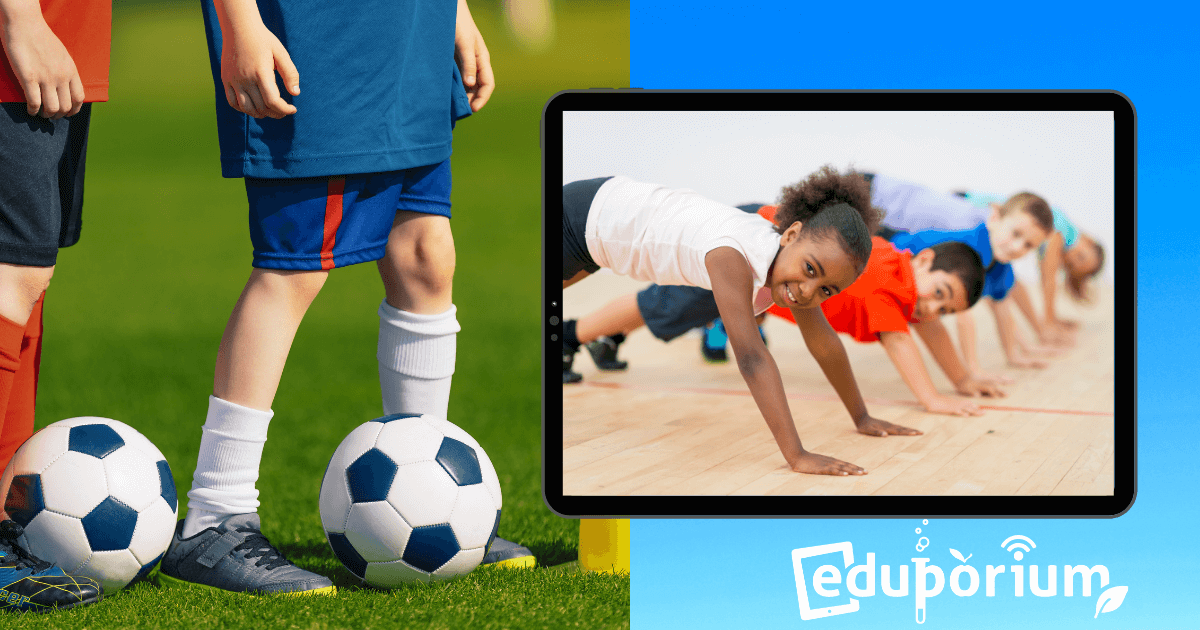With schools closing all across our country as well as worldwide, teaching from home has taken center stage. Many teachers, including the author of this guest post, have had to find a way to reinvent how we teach. To understand a teacher, you must walk a mile in their classroom. In my case, my classroom is the largest one in the school. It has anchor charts, word walls, posters—you name it! However, instead of doing a writing assignment, my students practice essential skills necessary to lifelong health. And, just because learning has largely moved online, it does not mean their physical education can stop.
I am a proud physical education teacher in the Bronx, NY. I have contributed to SHAPE America and the professional learning network of PE teachers and I know that it can be daunting navigating the expansive network of physical activity resources. Beyond that, this pandemic has brought its own unique challenges to my teaching approaches as well.
Let's play a little word association. When I say the word ‘sneakers,’ what thoughts come to mind? When I say ‘physical education,’ what comes to mind now? The phrase ‘PE’ or the word ‘gym’ makes many cringe and understandably so. PE is much more than just play and exercise, however. I have over eight years of PE teaching experience and two in special education in particular.
Organizations like the Society of Health and Physical Educators (SHAPE) have created national learning standards and grade level outcomes for PE. Gone are the days of just rolling the ball out and saying “let’s play some basketball.” Students in elementary school are learning the fundamental skills needed to play different games and activities as well as how to work collaboratively to achieve team goals. There has been a shift from simply playing soccer to thinking about the skills needed to play. Similarly, modern PE is not just about running around, but more about how physical activity contributes to our overall health and wellbeing.

Since physical education has shifted to taking place at home (and, yes, it is still taking place), these five recommendations for deeper understanding of physical activity have been something I’ve started using to make at-home PE both physical AND educational.
1) It’s all about Physical Literacy!
Physical literacy can be broken down into helping students develop three key traits: Confidence, competence, and motivation. While at home, encourage your children, students, and yourself to find something you enjoy doing! It may be new or may be something you’ve done before, but you want to find something you feel good about doing (confidence) because you feel that you can participate (competence) and this makes you want to keep doing it (motivation). Two months ago, I had no idea fitness drumming existed. Taking a ball or other object and making a drum out of it with spoons and then doing exercises with it turned out to be something immensely fun. Now, I want to find something else new to try!
2) Go at your Own Pace
I knew after playing football in high school that the NFL was not for me. Sports often place a focus on how fast we can move or how quickly we can shift our body and it’s true that these can be important. However, for home play, safety and going at your own pace are far more important—especially for kids. You can use a timer and try an exercise like Tabata, for example, in physical education. Tabata is 20 seconds of exercise and 10 seconds of rest. You can choose different exercises or look up pre-made Tabata workouts. Picking one that moves at your own pace is ideal since it allows you to go fast or slow.
3) Choose Your Own Adventure
I love choose your own adventure books. There are SO MANY resources available during this time, however, that it’s gotten kind of tough to choose. Sites like GoNoodle, the Online Physical Education Network (OPEN), and Dance Pl3y are great for students (parents can participate, too) and apps like Sworkit and home workouts like Zumba and Tabata are also good. Any kind of workout that can be adapted is usually a good pick. Many workouts can be one-size-fits-all and sometimes don’t offer enough variety, which could work well for you or you might want something that mixes exercises up. Pick a workout plan or exercises that YOU enjoy.
4) Be Honest
Find a routine and stick to it! It might be hard at first and you may just want to sit down, but you want to try to be active for at least 60 minutes every day. That doesn’t mean having to train for a marathon. If you can simply walk outside, that would be wonderful. You also want to balance your time online and offline. Watching workout videos can be fun, but it can also strain your eyes, so be mindful of that. If something works, stick with it. If it doesn’t, try something new after a day or two. It might just take some getting used to.
5) Write it Down
Every single time you exercise, write down what you did and for how long. Write down what you enjoyed and also what was hard. Ask yourself these questions to learn more about what’s working well in at-home PE. If you can go on Zoom or exercise with someone else, you can discuss your findings with them. Your thoughts will become actions, and your actions will then become habits.
As a physical education teacher, I am tasked with combining a host of available resources with standards in hopes to achieve desired outcomes like any teacher would be responsible for doing. In doing so, this creates physical activities that help students develop a deeper connection between physical and social-emotional health. The five secrets I laid out, in reality, are not really secrets at all. There is no one-size-fits-all exercise or activity program that will be the solution to exciting students. If you use these five guiding points, however, it will help them build some enjoyable physical activity into their new life of learning from home.
What’s great about being a PE teacher is that I will come up with great lessons and then my students take these ideas and they teach me even more as they complete them! Focus on activities that are fun, keep a log of when and how much you exercise, and just have fun! Just because we are isolated doesn’t mean we can’t find common ground through physical activity. I use ‘activity’ here instead of ‘sport’ because I may enjoy dribbling a basketball, but I don’t have to play basketball. I won’t be a professional basketball player, but I might just get my muscles strong enough to keep up with my students. Shakespeare said, “All the world’s a stage.”
I say, “All the world’s a place for play.”
Author Bio:
Jim Hambel is a PE teacher in the Bronx, NY. He has taught for eight years and is also certified in Childhood Education and Special Education for Grades 1-6. Jim has over 25 years of bowling experience and was inducted into the US National Bowling Hall of Fame for a perfect game and 800 series. He believes that physical education is and should be accessible to all children. When Jim is not teaching, he enjoys spending time with his wonderful wife and amazing daughter.
To keep up with the latest developments in distance education, be sure to follow our live blog. Check out the Rising Resources section of our blog as well for information on a bunch of different online tools students can use to learn new things at home! Follow Eduporium on Twitter and Instagram for all of the latest remote learning and STEAM education news.



